![]()
the Overwhelmingly Large Telescope (2017)
the Terrestrial Planet Finder (2014)
the Large Hadron Collider (2008)
according to the the International Astronomical Union's redefinition of the term 'planet' (August 24, 2006)
the solar system consists of eight planets and several dwarf planets such as Pluto
the AKS primality test (2002)
Eden Project (March 2001)
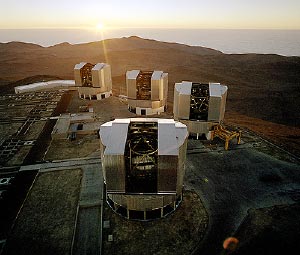
the Very Large Telescope (2000)

the Human Genome Project (2000) announced having completed its task
the international
space station (October 31, 2000) represents a merger of previously planned
independent
space stations, especially Russia's Mir 2, United States' Space Station Freedom
and the planned European Columbus,
representing a permanent human presence in space: it has been manned with a crew
of at least two since November 2, 2000
the Millennium Prize Problems (May 24, 2000)
Why the future doesn't need us (April 2000) Bill Joy
Top 1000 Scientists: From the Beginning of Time to 2000 AD (1999)
Susan Blackmore's Meme Machine (1999)
Thomas Hales' proof of the Kepler conjecture (1998)
using data from the U.S Department of Defense satellite Clementine (December 03, 1996) American astronomer
Anthony Cook announced the discovery of a frozen lake at the bottom of a crater at the south pole of the Moon
the Bose-Einstein Condensate (1995) was observed by Physicists at the Joint Institute for Laboratory Astrophysics
discovery of the top quark at Fermilab (1995)
M-theory (1995)
Andrew Wiles proved Fermat's last theorem (1993)
carbon nanotubes (1991)
the Hubble Space Telescope (1990)

Dolly (1996-2003)
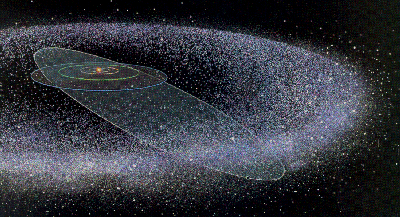
the Kuiper Belt (1995)

Biosphere 2 (1991-1994)
the Darwin Awards (1990s)

the Intelligent Design movement (1990s)
development of the first high temperature superconductors (1986)
the Soviet space station Mir (February 19, 1986 - March 23, 2001)
Genetic fingerprinting (1985)
the existence of W and Z particles (1983) was confirmed by CERN
Collective intelligence (1983)
Polymerase chain reaction (1983) was invented by Kary B. Mullis

the Mandelbrot set (1982)
Stanley P. Prusiner discovered proteins called prions (1982) which are linked to brain disorders in mammals. This discovery contradicted
long-held assumptions that only agents with DNA or RNA, such as viruses and bacteria, can replicate in the body and cause disease
Rupert Sheldrake's New Science of Life (1981)
the International Academy of Science (1980)
Louise Brown (July 25, 1978)
in the first instance of genetic engineering (1978) Stanley Cohen and Herbert Boyer splice together fragments
of bacterial DNA and introduce this "recombinant" DNA into a strain of Escherichia coli bacteria
restriction enzymes (1978) were discovered by Werner Arber

DSV Alvin (1977) explored the midoceanic ridge, discovered chemosynthetic life
Viking 1 (July 20, 1976) was the first spacecraft that returned color pictures of Mars to Earth
Richard Dawkins's The Selfish Gene (1976)
Cosmic string theory was introduced (1976)
the threat of CFCs to the ozone layer in the stratosphere (1974) was explained
by Mario J. Molina Frank Sherwood Rowland in a paper for the journal Nature
Hawking Radiation (1974) was calculated by Stephen W. Hawking
positron emission tomography (1974)
one of the first Grand Unification Theories (1974) was put forward by Howard Georgi and Sheldon L. Glashow
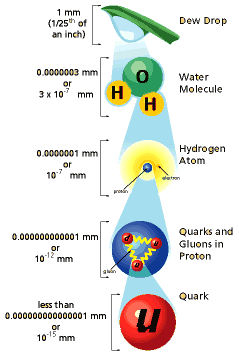
the Standard Model of particle physics (1973)

Magnetic resonance imaging (1973)
computed axial tomography (1972)
Salyut 1 (1971) was the first space station
reverse transcriptase (1970)
the Kola Superdeep Borehole (1970)
mechatronics (1969)

String theory (late 1960s)
the electroweak force (1967) was developed independently by Steven Weinberg
and Abdus Salam. It was originally proposed by Sheldon Glashow in 1960

the National Accelerator Laboratory (1967)
the first pulsar was discovered (1967) by Jocelyn Bell Burnell and Antony Hewish

George Gamow's Thirty Years That Shook Physics: The Story of Quantum Theory (1966)
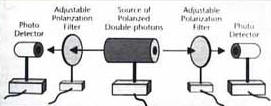
Bell's Theorem (1965)
the digital revolution (1965-present)
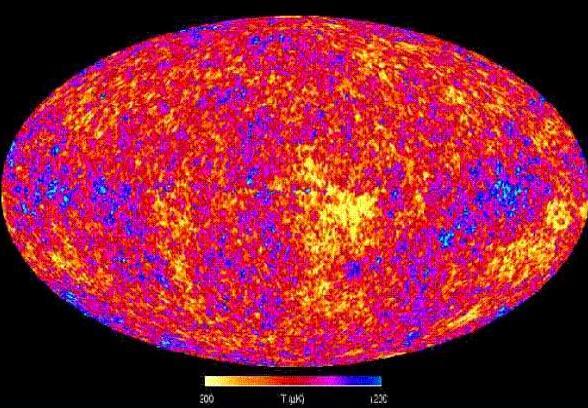
Arno Penzias and Robert Woodrow Wilson at Bell Telephone Laboratories (1965)
discovered cosmic microwave background radiation
the term quasar was coined (1964) by Chinese-born U.S. astrophysicist Hong-Yee Chiu
the Higgs boson was first predicted (1964)
the butterfly effect (1963)

Feynman diagrams (1960s)
the existence of tachyons (1960s) was proposed by George Sudarshan
Thomas Kuhn's Structure of Scientific Revolutions (1962)
the notion of quarks (1961) evolved out of a classification of hadrons
developed independently by Murray Gell-Mann and Kazuhiko Nishijima
the Nature of Things (1960)
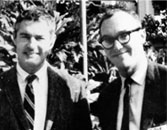
the Harvard Psilocybin Project (1960 - March 1962)

the first working laser was made (1960) by Theodore H. Maiman.
The term was laser itself was coined in 1959 by Gordon Gould
Seafloor Spreading (1960) was proposed by Harry Hess
the existence of the Van Allen Radiation Belts (July 1958) was confirmed
the Central dogma of molecular biology (1958)
New Scientist (1956)
Ribosomes (1956) were first observed by George Palade
Detection of the Free Neutrino: a Confirmation (1956)
the antiproton (1955) was discovered by Emilio Segre and Owen Chamberlain
the Maser (1953) is a device that generates or amplifies microwaves or radio waves (A similar device that amplifies light is called a laser)

the Miller-Urey experiment (1953)

the helical structure of the DNA molecule (1953) was discovered by
James D. Watson and Francis Crick together with Rosalind Franklin
the bubble chamber (1952)
the Hershey-Chase experiment (1952)
Thermoluminescence dating (1950s)

the Oort cloud (1950)

Einstein's Unified field theory (1950)
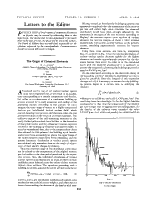
the Alpher-Bethe-Gamow theory (1948)
Quantum electrodynamics (1948) was proposed by Richard Feyman, Seymour Schwinger and Shin'chiro Tomonaga
jumping genes (1948) were discovered by Barbara McClintock
Physics Today (1948)
the Transistor (December 1947) was invented at Bell Telephone Laboratories
by John Bardeen, Walter Houser Brattain, and William Bradford Shockley
Brookhaven National Laboratory (1947)
discovery of the first true mesons the charged pions (1947)

carbon-14 dating (1947) was introduced by Willard Libby
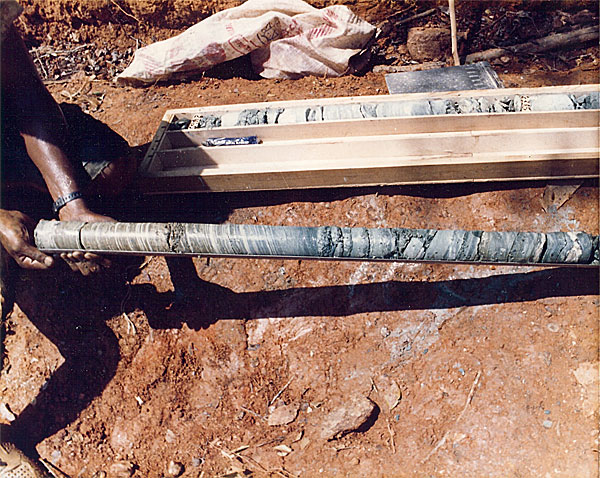
![]()
the correct formulation and proof of the uncertainty relation (1945) between
energy and time were suggested by L. I. Mandelshtam and I. E. Tamm
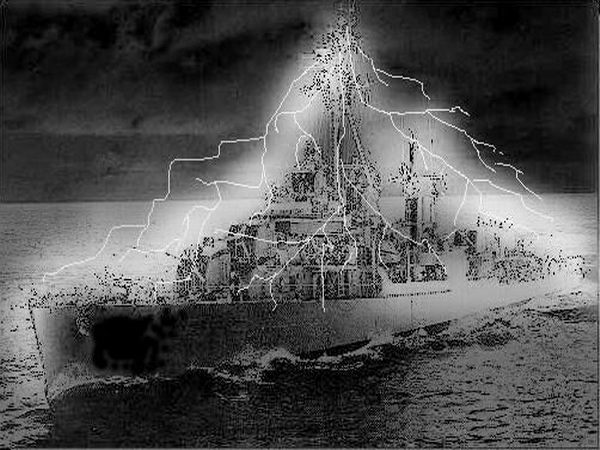
the philadelphia experiment (October 28, 1943)
Lysergic acid diethylamide (April 16, 1943)

the world's first artificial self-sustaining nuclear chain reaction ( December 2, 1942)
took place in the world's first nuclear reactor, Chicago Pile Number One
Plutonium was first produced and isolated (February 23, 1941) by Dr. Glenn T. Seaborg
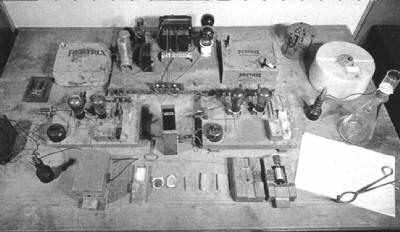
Otto Hahn and Fritz Straßmann succeeded (1938) to split the nucleus of a uranium atom
on a simple wooden experimenting table, in the first instance of induced Nuclear fission
the CNO cycle (1938) was proposed by Hans Bethe
the citric acid cycle (1937)
radio telescopes (1937)
the Rh Factor (1937)
Muons (1936) were discovered by Carl D. Anderson
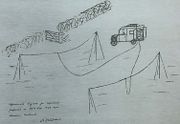
Radar (1935)
the Richter scale (1935)
the term 'supernova' (1934) was coined by Fritz Zwicky and Walter Baade
Karl Popper's Logic of Scientific Discovery (1934)
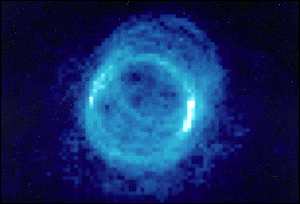
Cherenkov radiation (1934) was discovered
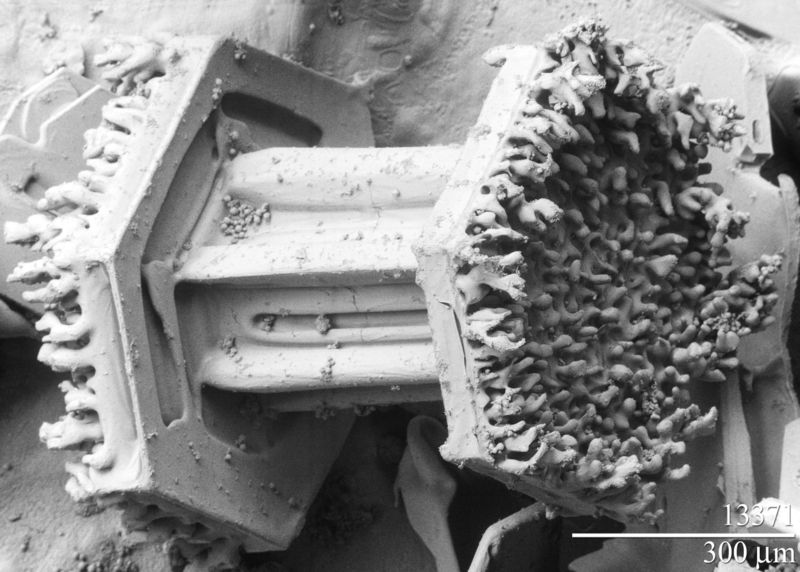
the electron microscope (1933)
the Cockcroft-Walton voltage multiplier (1932)
the positron (1932)
the neutrino (1930) was postulated by Wolfgang Pauli
Dirac's Principles of Quantum Mechanics (1930)
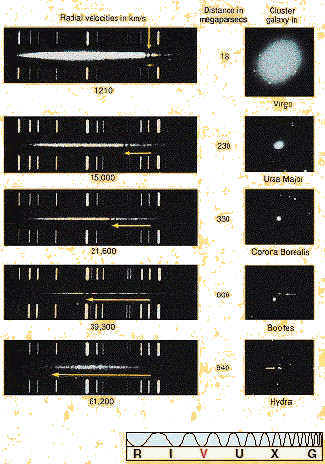
Edwin Hubble confirmed the big bang theory (1929) with the statement of his empirical Redshift Distance Law of galaxies
Griffith's experiment (1928)

Bohr's model of the atom was superseded by the probability cloud model of Erwin Schrödinger and Werner Heisenberg

Heisenberg's Uncertainty Principle (1927)
Georges Lemaître (1927) derived the Friedmann-Lemaître-Robertson-Walker equations
from Albert Einstein's equations of general relativity and proposed, that the Universe
began with the "explosion" of a "primeval atom" - what was later called the Big Bang
the Electron diffraction experiment (1927)
the Heitler-London theory (1927)
Arthur Eddington's The Internal Constitution of Stars (1926)
R.A. Fisher's Statistical Methods for Research Workers (1925)
Schrödinger's wave equation (1925)
the Pauli exclusion principle (1925)
the Scopes trial (1925)
the wave-particle duality of light and matter (1924) was described by Louis de Broglie
Edwin Hubble (December 30, 1924) announced
the existence of galaxies outside of the Milky Way
Electroencephalography (1924)
Lewis Acid-Base Theory (1923)
the Kaluza–Klein theory (1921)
the existence of the neutron (1920) was suggested by William Draper Harkins.
Evidence for its existence was not obtained until 1932
Hermann Staudinger explained that polymeres (1920) are
long-chain molecules held together by ordinary valency bonds
the Stern-Gerlach experiment (1920)
Bose–Einstein statistics (1920)

the Great Debate (April 26, 1920)
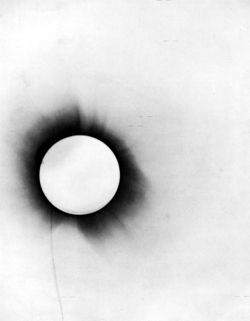
Arthur Eddington's Report on the relativity theory of gravitation (1919)
the International Astronomical Union (1919)
Rutherford discovered the proton (1919) in his experiments on artificial disintegration
the Kakeya needle problem (1917)
Gilbert N. Lewis proposed the idea of covalent bonds (1916) and introduced the electron-dot notation
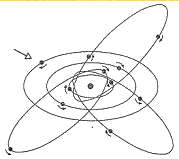
the Sommerfeld model of the atom (1916)
the fine-structure constant (1916)
the Schwarzschild radius (1916)
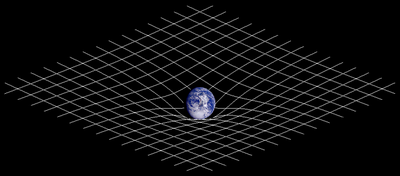
General relativity (1915)
the Mechanism of Mendelian Inheritance (1915)
Alfred Wegener's The Origin of Continents and Oceans (1915)
isotopes (1913) were discovered by J. J. Thomson
Moseley's law (1913)
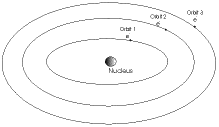
the Bohr model of the atom (1913)
Echo sounding (1912)
Casimir Funk (1912) coined the term Vitamin
the theory of continental drift (1912) was proposed by Alfred Wegener
Gustav Mie's Unified field theory (1912)
cosmic rays (1912) were discovered by Victor Hess
the redshift (1912) was discovered by Vesto M. Slipher
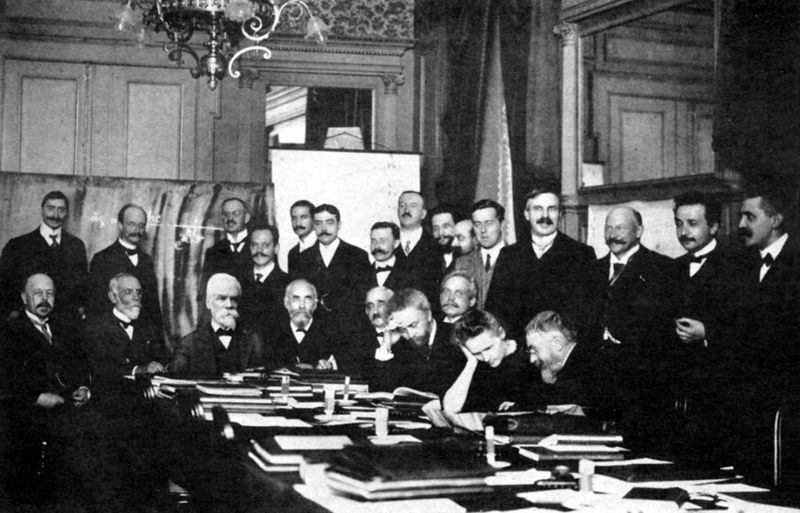
the Solvay Conference (1911)
superconductivity (1911)
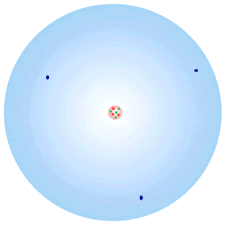
the Rutherford model (1911)
the first uranium-lead radiometric dating (1910) was performed by Arthur Holmes
the Hertzsprung-Russell diagram (1910)
Wilhelm Ludvig Johannsen (1909) coined the word gene (using the Greek for "to give birth to")
the Geiger-Marsden experiment (1909)
Robert Millikan's oil-drop experiment (1909)
the Mohorovičić discontinuity (1909)
the Henderson-Hasselbalch equation (1908)
the Hardy-Weinberg Rule (1908)
Minkowski space (1908)
Einstein published his principle of equivalence (1907) which says that gravitational
acceleration is indistinguishable from acceleration caused by mechanical forces
the third law of thermodynamics (1906) was proposed by Hermann Nernst
a proof of Earth's molten core (1906) was proposed by Richard Oldham
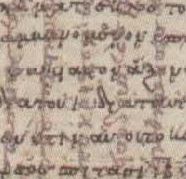
the Archimedes Palimpsest (1906)
the troposphere and the stratosphere (1906) were named by Léon de Bort
the term 'genetics' (1905) was coined by William Bateson
Spacetime (1905)
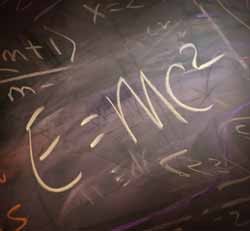
the Annus Mirabilis Papers (1905)
the theory of radioactivity (1904) was put forward by Ernest Rutherford and Frederick Soddy
the Koch snowflake (1904)
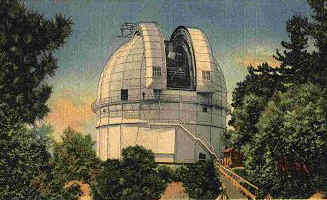
the Mount Wilson Solar Observatory (1904)
the mole (1902)
the ionosphere (1902) was discovered by Oliver Heaviside and Arthur Edwin Kennelly
Ergodic theory (early 1900s) was the forerunner of Chaos theory
Ernst Haeckel's Riddle of the Universe (1901)
Nobel Prizes (1901)
three types of human blood (1900) were discovered Karl Landsteiner, which were
later named A, B, and O. In 1902 he discovers a fourth type, to be named AB
Hugo de Vries and Carl Correns (1900) rediscovered Mendel's work
the Drude model (1900)
Planck's constant (1900)
gamma rays (1900) were discovered by Paul Ulrich Villard
Rutherford discovered alpha and beta rays (1899)
following Becquerel's discovery (1898) the French physicists Marie and Pierre Curie found other substances that emitted radioactivity
Hadamard's billiards (1898)

the electron (1897) was discovered as a a subatomic particle by Joseph John Thomson. As a unit
of charge in electrochemistry the electron was posited by G. Johnstone Stoney already in 1874
the hydrogenation process (1897) was discovered by Paul Sabatier
the idea that changes in the levels of carbon dioxide in the atmosphere (1896) could substantially
alter the surface temperature through the greenhouse effect was first formulated by Svante Arrhenius
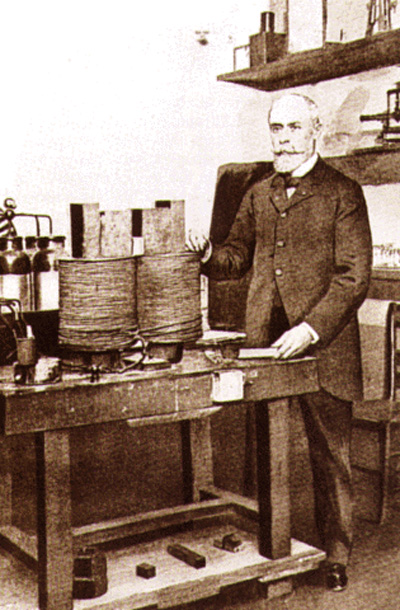
Radioactivity was first discovered (1896) by the French scientist Henri Becquerel while working on phosphorescent materials
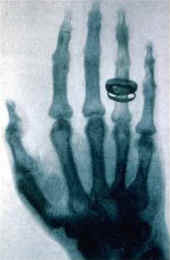
Wilhelm Conrad Röntgen began observing and further documenting X-rays (November 8, 1895)
the Astrophysical Journal (1895)
Jean Baptiste Perrin (1895) explained solar energy by the thermonuclear reactions of hydrogen
Christiaan Eijkman (1893-1897) found that fowl fed only polished rice develop a condition resembling beriberi (a disease caused
by lack of vitamin B1). He concludes that disease can be caused by depriving the body of certain substances, later known as vitamins
El Niño (1892)
Karl Pearson's the Grammar of Science (1892)
germ plasm theory (1890s) was formulated by August Weismann
Cayley tables (1889)
the National Geographic Society (January 27, 1888)
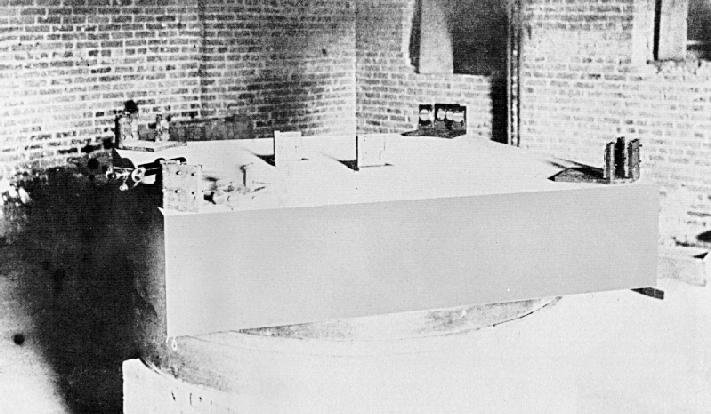
the Michelson-Morley experiment (1887)
Balmer lines (1885)
Louis Pasteur successfully used his vaccine against rabies (July 6, 1885) on 9-year old Joseph Meister

the International Meridian Conference (1884)
Svante Arrhenius' work on the conductivities of electrolytes (1884)
Karol Olszewski, Zygmunt Wróblewski and Karol Sitarski (1883) were the first to
liquefy oxygen, nitrogen and carbon dioxide from the atmosphere in a stable state
John Dreyer's New General Catalogue of Nebulae and Clusters of Stars (1880s)
Tesla, Gaulard, Stanley, and others (1881) invented alternating current electrical power

Science (1880)
Vector analysis (1880)
the Erlenmeyer Rule (1880)
Boltzmann distribution (1877)
the moons of Mars (1877) were discovered by Asaph Hall
Josiah Willard Gibbs' On the Equilibrium of Heterogeneous Substances (1876-1878) laid the foundations of physical chemistry
Georg Cantor established principles of mathematical set theory (1874)
![]()
the second law of thermodynamics (1874) was formally stated by Lord Kelvin
the Challenger Expedition (1873-1876) discovered the Marianas Trench and confirmed the
presence of the Mid-Atlantic Ridge using marked rope and timed intervals for their ocean soundings
Betti numbers (1871)
William Huggins' distinction between nebulas and galaxies (1870)
archaeoastronomy (1869)
nature (November 4, 1869)
van der Waals' forces (1869)
the periodic table of elements (1869)
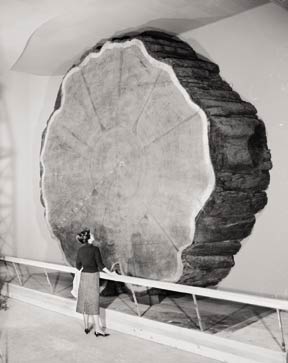
dating from tree rings (late 19th century)
Dynamite (1866) was invented by Alfred Nobel
the Massachusetts Institute of Technology (1865)
the concept of entropy (1865) was introduced by Rudolf Clausius
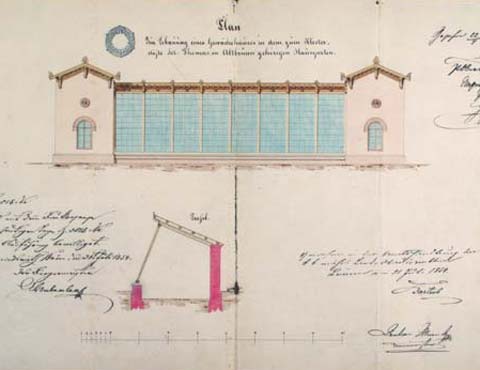
Gregor Mendel's Experiments on Plant Hybridization (1865)
Avogadro's number (1865)

the carbon ring structure of benzene (1865) was proposed by Friedrich August Kekulé von Stradonitz
Maxwell's equations (1864)
George Marsh's Man and Nature (1864)
pasteurization (1862)
the Erlenmeyer flask (1861)
Anders Jonas Ångström's studies of the solar spectrum (1861)
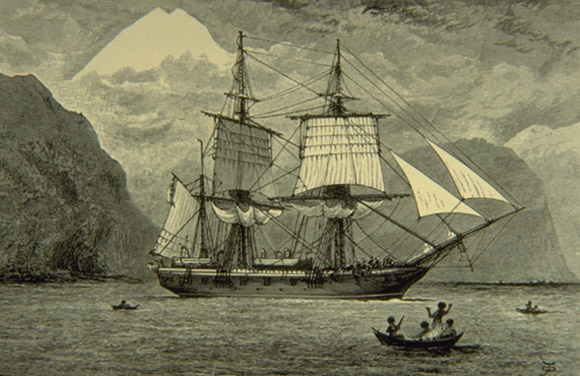
Darwin's Origin of Species (1859)
Stanislao Cannizzaro's Sunto di un corso di Filosofia chimica (1858)

the first successful laying of a Transatlantic telegraph cable (August 1858)
revealed the presence of a mid-ocean ridge
the Möbius strip (1858)
the first aniline dye, mauveine (1856) was discovered accidentally by William Perkin
Johann Loschmidt (1856) determined the size of the molecules in air
Robert Bunsen started using a burner developed by his technician (1855) this burner quickly becomes
known as the Bunsen burner, although credit for its invention should really go to Michael Faraday

Riemannian geometry (1854)
the Gyroscope (1852) was invented by Jean Foucalt
Rudolf Wolf calculated that the sunspot cycle averages 11.1 years (1852)
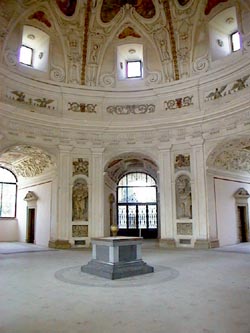
the Foucault pendulum (1851)
the Temperature record (1850)
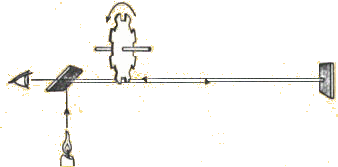
Hippolyte Fizeau (1850) measured the speed of light and electricity
Alcide d'Orbigny's Prodrome de Paléontologie Stratigraphique (1849)
Absolute Zero (1848) was proposed by William Thomson Kelvin
the American Association for the Advancement of Science (September 20, 1848) was created in Pennsylvania

the term "matrix" was coined (1848) by J. J. Sylvester
![]()
the first law of thermodynamics (1847) was published as a definitive statement of the conservation of energy by Hermann von Helmholtz

in the first public demonstration of diethyl ether as an anesthetic agent (October 16, 1846)
William Thomas Green Morton removed a vascular tumour from the neck of his patient
the Smithonian Institution (1846)
the Scientific American (1845)
nitrocellulose (gun cotton) (1845) was acidentally discovered by Christian Schönbein
the existence of transcendental numbers was first proved (1844) by Joseph Liouville

the taxon Dinosauria ("terrible lizard") was formally named (1842) by Richard Owen
![]()
Chromosomes (1842)
the Doppler effect (1842)
![]()
Joule's law (1840)

Roderick Murchison's Silurian System (1839)
Cell theory (1839)
William Whewell's History of the Inductive Sciences (1837)
introduced the term 'scientist' to replace 'man of science'
the Coriolis effect (1835)
Charles Lyell's Principles of Geology (1833)
Group theory (1832)
Poisson's ratio (1830)
![]()
Gaspard-Gustave Coriolis (1829) published "Du Calcul de l'effet des machines" outlining the mathematics of kinetic energy
Urea (1828) was the first organic compound to be artificially synthesized from inorganic starting materials
![]()
the first statement of Ohm’s law (1827) that the current of electricity is equal to the ratio of the voltage
to the resistance, appeared in Georg Simon Ohm`s "The galvanic circuit investigated mathematically"

non-Euclidean geometry (1826) was developed by Nikolai Ivanovich Lobachevsky
the Electromagnet (1824) was invented by William Sturgeon
the Abel–Ruffini theorem (1824)
Imperial units (1824)
Joseph Fourier's Analytical Theory of Heat (1822)
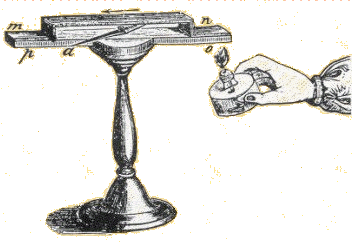
the Seebeck effect was first discovered (1821) accidentally, by the Estonian physicist Thomas Johann Seebeck,
who found that a voltage existed between two ends of a metal bar when a temperature gradient existed in the bar
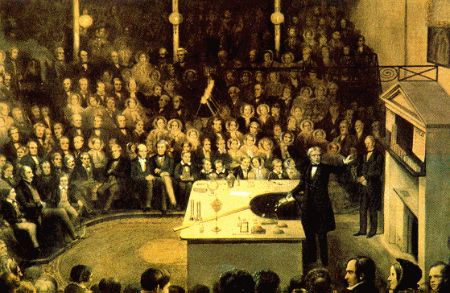
the first electric motor (1821) was built by Michael Faraday
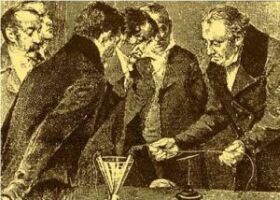
the relationship between electricity and magnetism (April 1820)
was discovered by Hans Christian Ørsted
hydrogen peroxide (1818) was discovered by Louis-Jacques Thénard
Bessel functions (1817)
Wiliam Smith's Strata Identified by Oragnised Fossils (1816)

William Smith's geological map of England and Wales (and part of Scotland) (1815)
the spectroscope (1814) was invented by Joseph von Fraunhofer
Jöns Jakob Berzelius developed the system of chemical notation (1813) in which
each element is represented by the initial letter or pairs of letters from their names
George Cayley's On Aerial Navigation (1810) laid the foundation of aerodynamics
Amedeo Avogadro (1810) distinguished between atoms and molecules
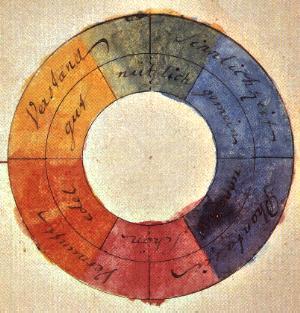
Johann Wolfgang von Goethe's Theory of Colours (1810)
Jean-Baptiste Lamarck's Philosophie zoologique (1809)
Gay-Lussac's law (1809)
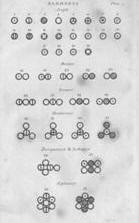
John Dalton's New System of Chemical Philosophy (1808)
Etienne-Louis Malus (1808) discovered polarised light
Chemicals were classified as either organic or inorganic (1807) by the Swedish chemist Jöns Jakob Berzelius

the ultraviolet part of the electromagnetic spectrum (1802) was discovered by Johann Wilhelm Ritter

Thomas Young's double-slit experiment (1801)
Infrared Radiation (1800) was discovered by William Herschel
the Library of Congress (April 24, 1800)
the Fundamental theorem of algebra (1799) was proven by Karl Friedrich Gauss

the Cavendish experiment (1798)
Erasmus Darwin's Zoönomia (1796)
the first successful vaccine (1796) was developed by Edward Jenner from cowpox to cure smallpox
James Hutton's Theory of the Earth (1795)
the principle of faunal succession (early 1790s)
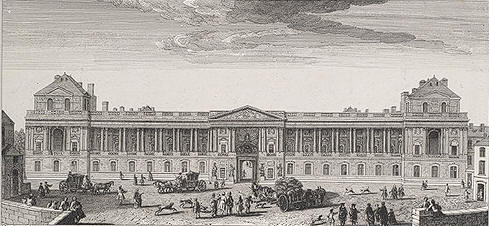
public museums (1793)

the metric system (1791)
the fact that acids and bases neutralise in equal proportions (1791) was discovered by Jeremias Richter
Annalen der Physik (1790)
the law of conservation of mass (1789) was formulated by Antoine Lavoisier
Joseph Louis Lagrange's Mécanique Analytique (1788)
Buffon's Histoire naturelle, générale et particulière (1788)
Charles-Augustin de Coulomb (1785) presented his three reports on Electricity and Magnetism

the Atwood machine (1784)
Uranus (March 13, 1781) was discovered by William Herschel
Abraham Gottlob Werner's Neptunism (1780)

bioelectricity (1780) was discovered by Luigi Galvani
photosynthesis (1779) was discovered by Jan Ingenhousz
the imaginary number i (1777) was introduced by Leonhard Euler

Coulomb's torsion balance (1777)

Charles Messier's catalogue of Nebulae and Star Clusters (1774)
Joseph Priestley (1772) showed that growing plants can restore air
that has been made 'lifeless' by animals breathing it or fire burning in it
Lazzaro Spallanzani proved that boiling kills microorganisms (1768)
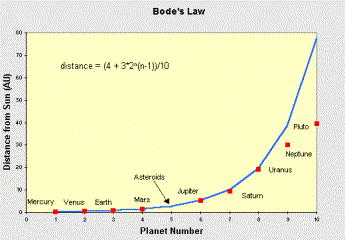
the Titius-Bode law (1766)
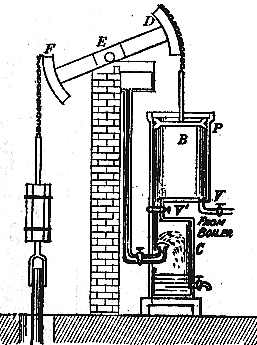
the Watt steam engine (1765)
Descriptive Geometry (1765) which became the basis of mechanical drawing and architectural plans, was invented
by French mathematician Gaspard Monge. His ideas were formally published in 1795, in his Géométrie descriptive
Photometry (1760) was founded by Johann Heinrich Lambert
Caspar Friedrich Wolff's Theoria Generationis (1759)
the 10th edition of Carolus Linnaeus' Systema naturae (1758)
introduced the zoological nomenclature known as Linnaean taxonomy
Joseph Black's experiments on magnesia, quicklime (1755) and other
alkaline substances was the first quantitative chemical research
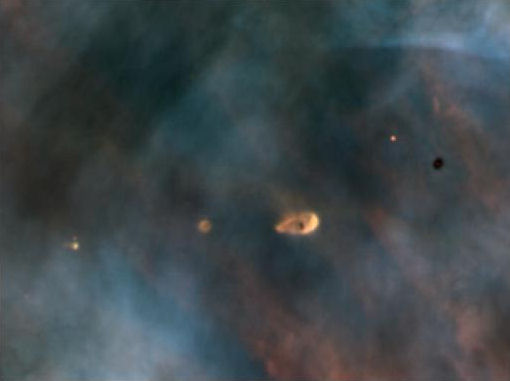
the Kant-Laplace theory (1755)
carbon dioxide (1754) was discovered by Joseph Black
the British Museum (1753)
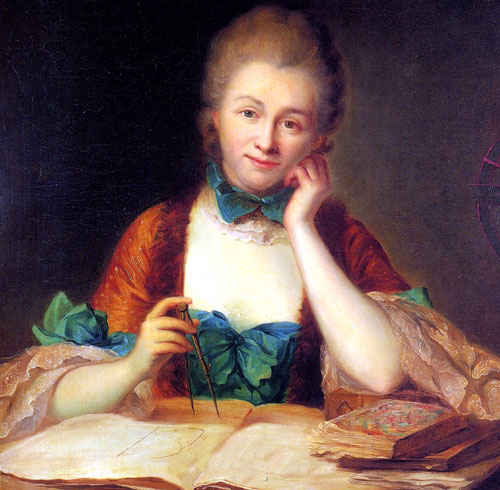
Émilie du Châtelet's correction of Newton's formula (1749) E = mv to E = mv²
![]()
Euler's identity (1748)
Julien Offray de La Mettrie's L'homme machine (1747)
the principle of least action (1746) was formulated by Pierre-Louis Moreau de Maupertuis
John Theophilus Desaguliers' Course of Experimental Philosophy (1744)
the Celcius scale was changed (1743) so that 0 degrees
is the freezing point of water and 100 degrees is its boiling point
the Celsius temperature scale (1742) was proposed by Anders Celsius in a paper to the Royal Swedish Academy of Sciences

Steller's Sea Cow was discovered in the Bering Strait (1741) by the
naturalist Georg Steller who was traveling with the explorer Vitus Bering
Pierre Louis Maupertuis acted as chief of an expedition (1736) sent by
King Louis XV to Lapland to measure the length of a degree of the meridian
Carolus Linnaeus' Systema naturae (1735)
the f(x) function symbol (1734) was introduced by Leonhard Euler
C. F. du Fay discovered the existence of two types of electricity (1733) and named them
"vitreous" and "resinous" (later known as positive and negative charge respectively)
the sextant (1730)
John Harrison designed and built the world's first successful chronometer (1730) a maritime clock,
whose accuracy was great enough to allow the determination of longitude over long distances
the nutation of planet Earth was discovered (1728) by the English astronomer James Bradley

Stephen Hales' Vegetable Staticks (1727)
Leonhard Euler started to use the letter e (1727) for the base of the natural logarithm
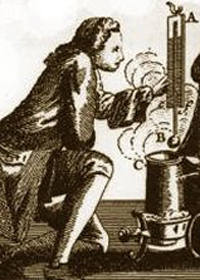
the Fahrenheit scale (1724)
the St. Petersburg Academy of Sciences (1724)

Abraham de Moivre's Doctrine of Chances (1718)
Edmund Halley (1718) announced his discovery that the fixed stars actually have their own motion called proper motion
the Longitude prize (1714)
Daniel Gabriel Fahrenheit invented the first mercury thermometer (1714)
Jakob Bernoulli's Ars Conjectandi (1713)
Johann Bessler's self-moving wheel (1712)

the Newton vs. Leibniz calculus controversy (1709-1716)
Edmond Halley (1705) published Synopsis Astronomia Cometicae, which stated his belief that
the comet sightings of 1456, 1531, 1607, and 1682 related to the same comet, which he predicted
would return in 1758. When it did it became generally known as Halley's Comet
John Ray's Historia Plantarum (1704)
Newton's Opticks (1704)
the Prussian Academy of Sciences (1700)
Rudolf Jakob Camerarius' De sexu plantarum epistola (1694)
Newton's Tractatus de Quadratura Curvarum (1693) was published in 1704 as an appendix to his Optiks

John Ray's Synopsis methodica Animalium Quadrupedum et Serpentini Generis (1693)

Edmund Halley's hollow Earth theory (1692)
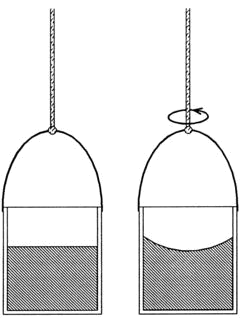
Isaac Newton's rotating bucket argument (1687)
![]()
Newton's laws of motion were first published (1687) in his work "Philosophiae Naturalis Principia Mathematica"
Gottfried Leibniz' Nova methodus pro maximis et minimis (1684)
Nehemiah Grew's Anatomy of Plants (1682)
the law of elasticity (1678) was formulated by Robert Hooke

Christiaan Huygens' Traité de la lumiere (1678)
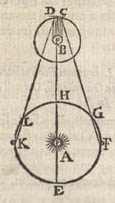
Ole Rømer made the first quantitative measurements of the speed of light (1676)

microorganisms (1676) were discovered by Anton van Leeuwenhoek
Gottfried Leibniz invented calculus (November 11, 1675)
Christiaan Huygens' Horologium Oscillatorium (1673)
the fundamental theorem of calculus (1670)
Nicolas Steno's De solido intra solidum (1669)
Francesco Redi disproved the theory of spontaneous generation (1668) with experiments on flies
Jan Swammerdam (1668) observed and described red blood cells with his microscope
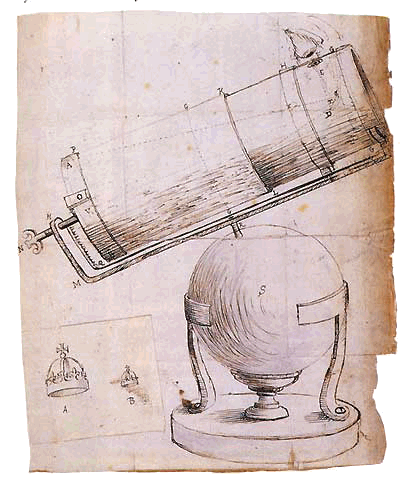
the reflecting telescope (1668) was invented by Isaac Newton

Newton discovered that glass prisms (1666) separate white light into spectrum of colours

Newton's apple (1666)
the Academy of Sciences (1666)
Newton discovered the generalised binomial theorem (1665)

Robert Hooke's Micrographia (1665)
Thomas Willis' Cerebri Anatome (1664) was the first monograph on brain anatomy and physiology
Boyle's law (1662)
Capillaries (1661) were discovered by Marcello Malpighi
the phlogiston theory (1660)
the Royal Society (1660)
A True & Faithful Relation of What passed for many Yeers between Dr. John Dee and some spirits (1659)
Giandomenico Cassini's astronomical studies (1656)
the Magdeburg hemispheres (1650)

Descartes' vortices (1644)
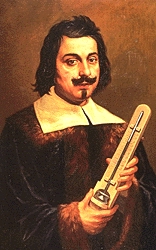
the barometer (1643) was invented by Evangelista Torricelli
Pascal's work on the principles of hydraulic fluids (1642)
Projective geometry (1639) was founded by Gérard Desargues
the Folium of Descartes (1638)
Fermat's Last Theorem (1637)
René Descartes published an explanation for rainbows and cloud formation (1637)

the coordinate system (1637)
René Descartes' Discourse on Method (1637)
the principle of relativity (1632)

Galileo's Dialogue Concerning the Two Chief World Systems (1632)
Benedetto Castelli's Mensuration of Running Water (1628)
Henry Briggs' Arithmetica Logarithmica (1624)
Snell's law (1621)
Francis Bacon's Novum Organum (1620)
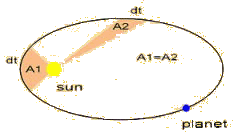
Kepler's laws of planetary motion (1619)
William Harvey announced his discovery of the circulatory system (1616) and in
1628 published his work Exercitatio Anatomica de Motu Cordis et Sanguinis in Animalibus

the rings of Saturn (1616) were observed by Gallileo
Sanctorius' studies of insensible perspiration originated the study of metabolism (1614)
John Napier's logarithms (1614)
Bartholomaeus Pitiscus is credited with inventing the decimal point in his trigonometrical tables (1612)
it was subsequently accepted by John Napier in his logarithmic papers
Gallileo's Sidereus Nuncius (1610)
sunspots (1610) began to be observed telescopically

the telescope (1608) was invented by Hans Lippershey. Galileo made
his own in 1609 and was the first to use it for astronomical purposes
Francis Bacon analyzed the scientific method in his Great Instauration of Learning (1605)
William Gilbert's De Magnete (1600)
Ulisse Aldrovandi's textbooks on zoology (1599)
Andreas Libavius' Alchemia (1597)

the microscope (1595) was invented by Hans Janssen

Galileo's thermoscope (1593)
Tommaso Campanella's Philosophia sensibus demonstrata (1592)
François Viète started the use of letters to represent variables (1591)

in order to study the acceleration due to gravity (1589) Galileo Galilei introduced experiments with inclined planes
![]()
Simon Stevin's La Theinde (1585)
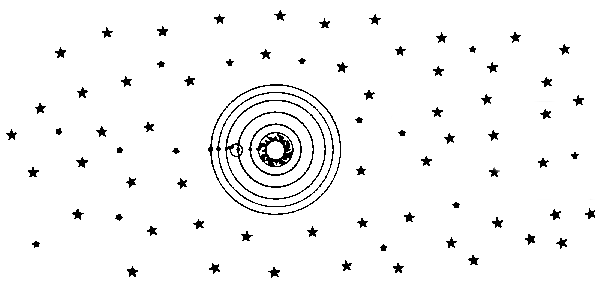
Giordano Bruno's On the Infinite Universe and Worlds (1584)
François Viète's Canon mathematicus seu ad triangula (1579)
Francesco Maurolico's Arithmeticorum libri duo (1575) includes one of the first known proof by mathematical induction

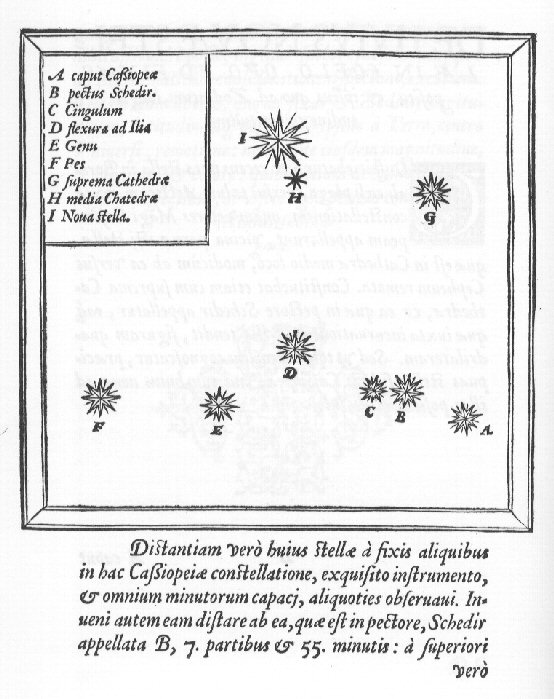
Tycho Brahe's De Stella Nova (1573)
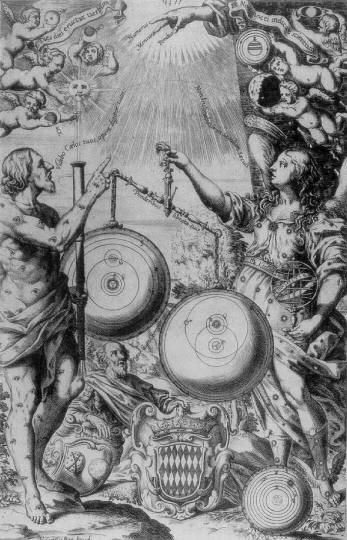
Tycho Brahe (late 16th century) worked to combine what he saw as the geometrical
benefits of the Copernican system with the philosophical benefits of the Ptolemaic
system into his own model of the universe, the Tychonic system
Rafael Bombelli published L'Algebra parte maggiore dell'aritmetica (1572) the first systematic
examination of imaginary numbers (numbers that are multiples of i, where i is the square root of -1)
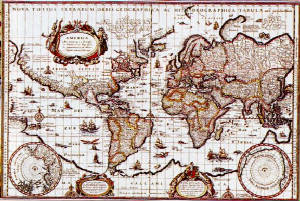
the Mercator projection (1569)
Bernardino Telesio's De Rerum Natura (1565)
the Academia Secretorum Naturae (1560) was founded in Naples by Giambattista della Porta

Conrad Gessner's Historiae Animalium (1558)

the = sign was introduced (1557) by Robert Record
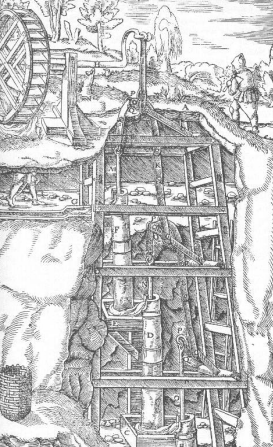
Agricola's De re metallica (1556)
Michael Servetus' Christianismi Restitutio (1553)

Bartolomeo Eustachi's Anatomical Engravings (1552)
Adam Riese's Rechnung nach der lenge auff der Linihen und Feder (1550)

Andreas Vesalius' De Humanis Corporis Fabrica (1550)
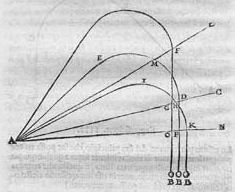
Niccolò Tartaglia's ballistics (1547)
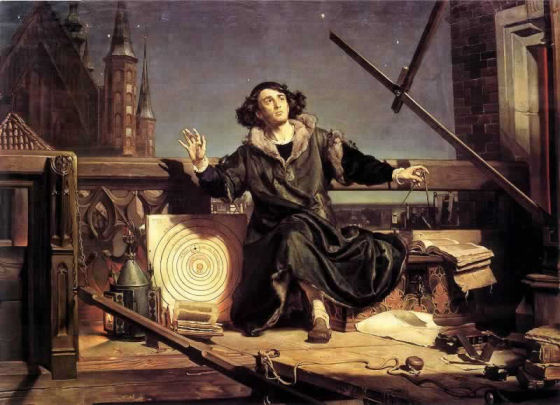
Nicolaus Copernicus (1543) was an astronomer who provided the first modern formulation of a heliocentric
(sun-centered) theory of the solar system in his epochal book On the Revolutions of the Celestial Spheres
Georg Joachim Rheticus's Narratio prima (1540)
Otto Brunfels' Herbarum vivae icones (1530)
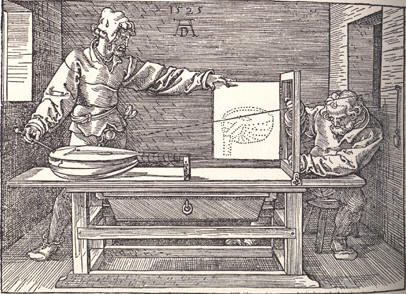
Albrecht Dürer's Underweysung der Messung (1525)
Petrus Apianus' Cosmographicus liber (1524)
Paracelsus (1520) pioneered the use of chemicals and minerals in medicine

Gregor Reisch's Margarita Philosophica (1503)

Leonardo da Vinci's studies in science and engineering (1500)
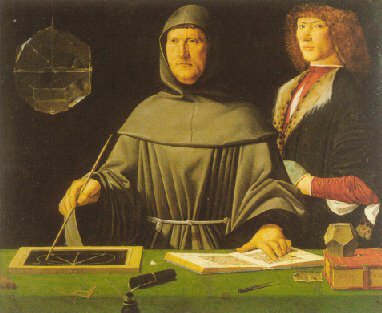
Luca Pacioli's Summa de arithmetica, geometrica, proportioni et proportionalita (1494)
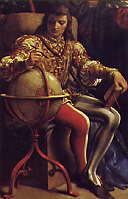
the first globe known as the "Nürnberg Terrestrial Globe" (1492) was finished by Martin Behaim
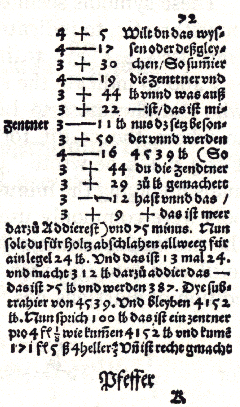
the arithmetic symbols for addition and subtraction (1489) were invented by Johannes Widmann
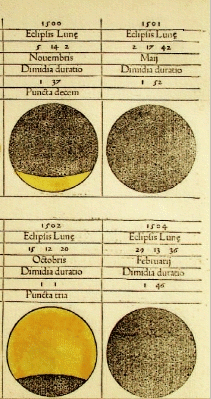
Regiomontanus' Ephemeris (1475)
Hermeticism (1460)

Johann Gutenberg (re)invented the printing press (1455)

Nicholas of Cusa's coincidence of opposites (1430)
Ulugh Beg's observatory (1428)
the Age of Discovery (early 15th century - early 17th century)
Richard of Wallingford's Quadripartitum de sinibus demonstratis (14th century) was the first original Latin treatise on trigonometry
Occam's razor (14th-century)
Gersonides' Book of Numbers (1321)

the first public, systematic dissection of a corpse (1315) was conducted by Mondino de Liuzzi

explanations for the rainbow phenomenon (1300)
Merton College (1274)
the Zij-i Ilkhani (1272)
Witelo's Perspectiva (1270)
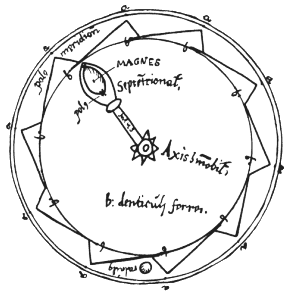
Pierre de Maricourt's Epistola de magnete (1269)
William of Moerbeke's translations (13th century)
the Alfonsine tables (1252)
the magnifying glass was invented by Roger Bacon (1250)
Albertus Magnus isolated arsenic (1250)
Robert Grosseteste's writings on the scientific method (13th century)
Al-Jazari's Automata (1205)
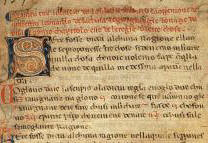
Fibonacci's Liber Abaci (1202)
Gerard of Cremona's translations of Arabic scientific works (twelveth century)
Thierry of Chartres' account of creation (twelveth century)

the Latin translation of al-Khwarizmi's book On the Calculation with Hindu Numerals (twelveth century)
introduced the use of the positional number system and the number zero to Europe
Muhammad al-Idrisi's mappa mundi (1154)
Bhaskara (1150) developed differential calculus
a special case of the mean value theorem (12th century) was first elucidated by Indian astronomer Bhaskara

the earliest record about the use of a compass in
navigation (1117) was Zhu Yu's
book "Pingzhou Ke Tan"
(Pingzhou Table Talks). Alexander Neckam has preserved to us the earliest
European notices of the magnet
as a guide to seamen in his work De naturis rerum, 1190
Omar Khayyám's writings (1100) on Algebraic geometry
Shen Kuo's Dream Pool Essays (1088)
the Domesday Book (1086)
the Tables of Toledo (eleventh century)
Al-Jayyani, an Arabic scholar in Moorish Spain (1060) wrote the first treatise on spherical trigonometry
mappae mundi (Middle Ages)
Gerbert d'Aurillac's Mathematical writings (end of the 10th century)
Ibn Sahl On Burning Mirrors and Lenses (984)
Abu Jafar Khazeni's balance of wisdom (10th century)
Al-Razi's books on medicine and chemistry (925)
x² + 10x = 39
x² + 21 = 10x
3x + 4 = x²
Algebra (820) is derived from operations described in the treatise written by the Persian mathematician Al-Khwarizmi
al-Ma'mun's House of Wisdom (825)

Jabir Ibn Hayyan (750) turned alchemy into a science
the Venerable Bede On the Nature of Things (early 8th century)

the Islamic Golden Age (700-1400)
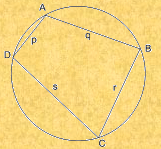
![]()
0
the earliest known text to treat zero as a number in its own right (628) was Brahmagupta's
Brahma Sphuta Siddhanta (The Opening of the Universe), a work on astronomy and mathematics,
which gives methods to solve quadratic equations, sum series, and compute square roots
Justinian closed the pagan schools in Athens (529)
Zosimus' Historia Nova (518)
the mathematician-astronomer Aryabhata first used infinitesimals (499) and
expressed an astronomical problem in the form of a basic differential equation
Martianus Capella's On the wedding of Philology and Mercury (ca. 420)
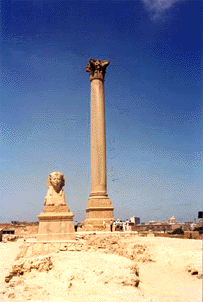
the Royal Library of Alexandria (391) was destroyed by a mob of rioters who burned it down
Theon of Alexandria's translation of Euclid's Elements (364)
Pappus of Alexandria wrote Synagoge (Collections) (340) a guide to Greek geometry
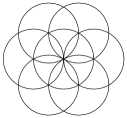
the Emerald Tablets (300)
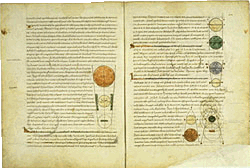
Calcidius (4th cent.)
Liu Hui calculated the value of pi as 3.14159 (263) which is correct, to five decimal places in his book with solutions to
mathematical problems presented in the famous Chinese book of mathematics the Nine Chapters on the Mathematical Art
Diophantus' Arithmetica (250)
Cleomedes' On the Circular Motions of the Celestial Bodies (2nd century)
Galen's On the Elements According to Hippocrates (160)
Ptolemy's Geographia (150)
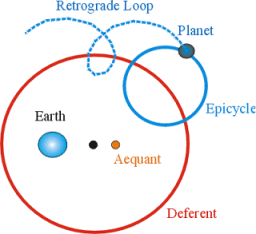
Ptolemy's Almagest (150)

Chinese philosopher Chang Heng invented a seismoscope (132)
Nicomachus' Introduction to Arithmetic (100)
Pliny the Elder's Natural History (77)

Pedanius Dioscorides' De Materia Medica (70)
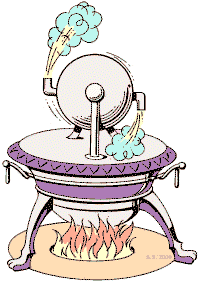
the first steam engine (ca. 50) was invented by Heron of Alexandria
Strabo's Geographica (25)
the Nine Chapters on the Mathematical Art (1st century)
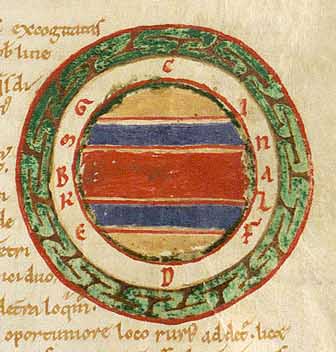
the Dream of Scipio (51 bc)
Lucretius' On the Nature of Things (around 60 bc)
Hipparchus discovered the precession of the equinoxes (ca 146 bc)
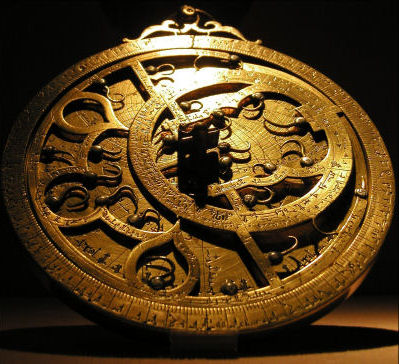
Hipparchus (150 bc) was the first Greek to develop quantitative and accurate models for the motion of
the Sun and Moon. For this he made use of the observations and knowledge accumulated over centuries
by the Chaldeans from Babylonia. He was also the first to compile a trigonometric table, which allowed him
to solve any triangle. With his solar and lunar theories and his numerical trigonometry, he was probably the first
to develop a reliable method to predict solar eclipses. His other achievements include the discovery of precession,
the compilation of the first star catalogue of the western world, and probably the invention of the astrolabe
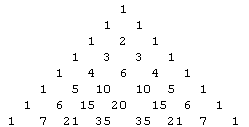
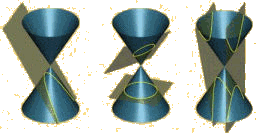
Apollonius of Perga (230 bc) gave the ellipse, the parabola, and the hyperbola the names by which we know them.
The hypothesis of eccentric orbits, or equivalently, deferent and epicycles, to explain the apparent motion of the
planets and the varying speed of the Moon, are also attributed to him

Eratosthenes calculated the circumference of the Earth to be 39,690 km (240 bc) today it is measured at 40,008 km
Eratosthenes' map of the world
22⁄7 (240 bc)
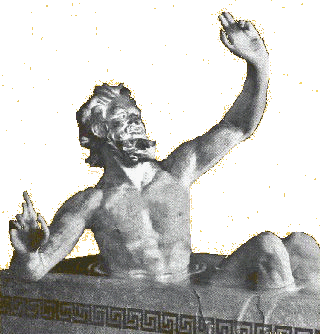
Archimedes (ca. 245 bc) found it
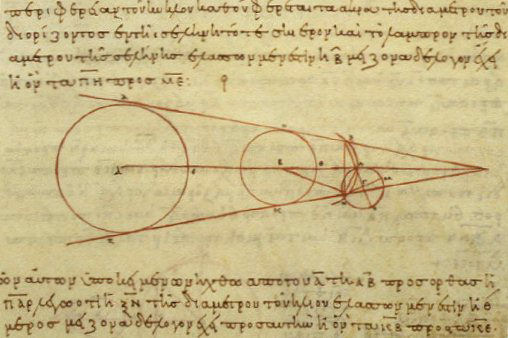
Aristarchus of Samos (around 250 bc) was the first to propose that
the sun is the center of the universe and that the earth moves around it

armillary spheres (255 bc)
Hindus in India develop the Arabic system of number notation (260 bc)
Aratus' Phaenomena (ca 270 bc)
Erasistratus and Herophilus' school of anatomy in Alexandria (280 bc)
perfect numbers (3rd century bc)
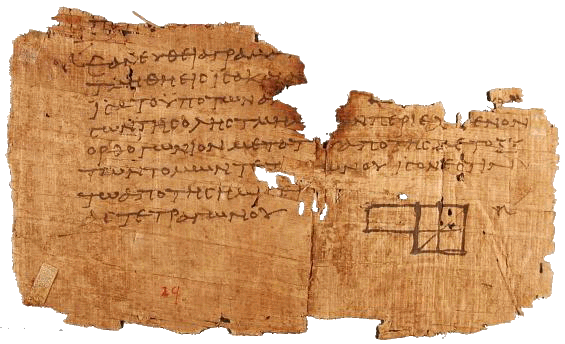
Euclid's Elements (early 3rd century bc)
the Greeks began to write on parchment (3rd century bc)
Stoic logic (early 3rd century bc)
Epicurus' atomism (310 bc)
Strato of Lampsacus (310 bc) can be regarded as the first philosopher to formulate a worldview,
in which the universe is regarded as a mechanism and transcendent forces (i.e. deities) are nonexistent
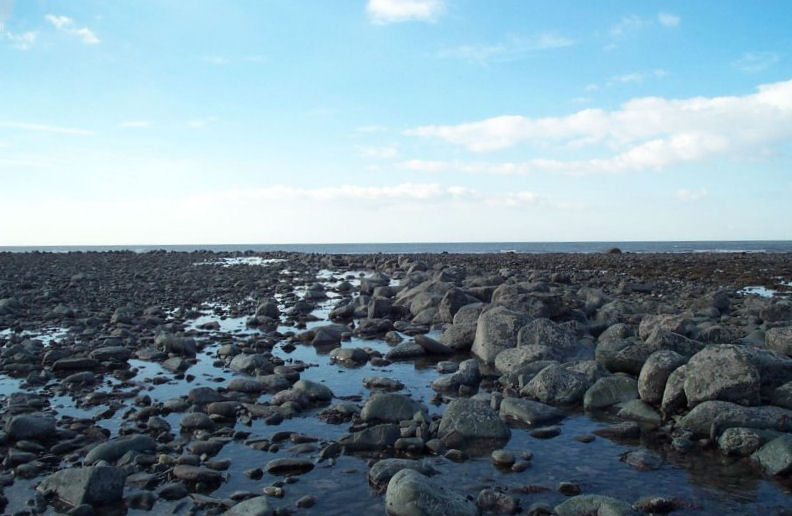
Pytheas suggested (330 bc) that the tides were caused by the moon
and described the Midnight Sun, the aurora and Polar ice
Aristotelian logic (330 bc)
Aristotle argued for a spherical Earth (ca 330 bc)
Theophrastus' botanical treatises (340 bc)
Aristotle's minima naturalia


Aristotle's five elements (350 bc)
like the Pythagoreans Hicetas and Ecphantus, Heraclides Ponticus (350 bc) proposed that the
apparent daily motion of the stars was created by the rotation of the Earth on its axis once a day
Menaechmus (4th century bc) discovered conic sections
Speusippus (370 bc) wrote books on biological classification
Archytas founded the study of mathematical mechanics (4th century bc)
Eudoxus (around 380 bc) calculated the 23,6 degree tilt of the Earth
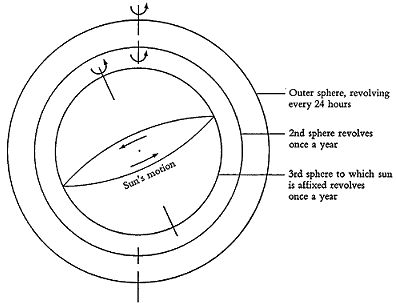
Eudoxus of Cnidus' planetary model (380 bc)
Theaetetus' work in mathematics (390 bc)
Democritus (430 bc) developed the atomic theory from Leucippus
Hippocrates' squaring of Lunes (450 bc)
Antiphon's method of exhaustion (450 bc)
![]()
Leucippus (450 bc) was among the earliest originators of atomism
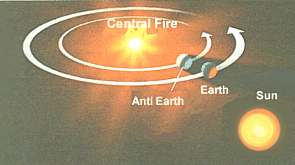
Philolaus (450 bc) supposed that the sphere of the fixed stars, the five planets, the Sun, Moon
and Earth, all moved round the central fire, but as these made up only nine revolving bodies, he
conceived in accordance with his number theory a tenth, which he called counter-earth

the Hippocratic Corpus (450 bc)
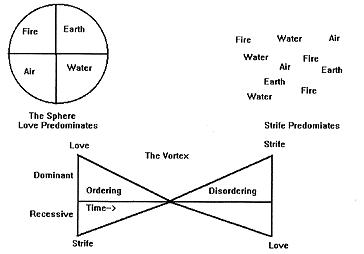
Empedocles' philosophy (460 bc) is best known for being the origin of the cosmogenic theory of the four classical elements

Anaxagoras (462 bc) brought philosophy and the spirit of scientific inquiry from Ionia to Athens
Hecataeus' map (ca 500 bc)

the babylonian zodiac (ca. 500 bc)

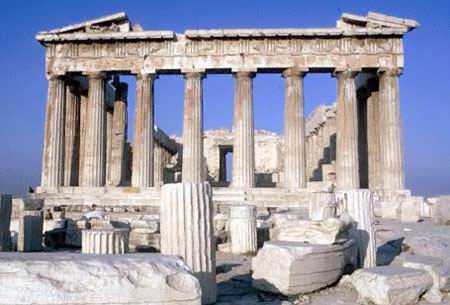
Theano's most important work (520 bc) is said to have been a treatise on the principle of the golden mean



Xenophanes (540 bc) concluded from his examination of fossils
that water once must have covered all of the Earth's surface
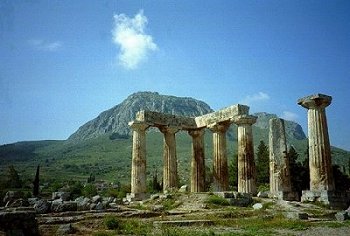
Anaximenes held that everything in the world is composed of air at different degrees of density (550 bc)

Anaximander created the first map of the world (580 bc)

Anaximander claimed that arche is the apeiron
Thales predicted the eclipse of the sun which occurred on (May 28, 585)
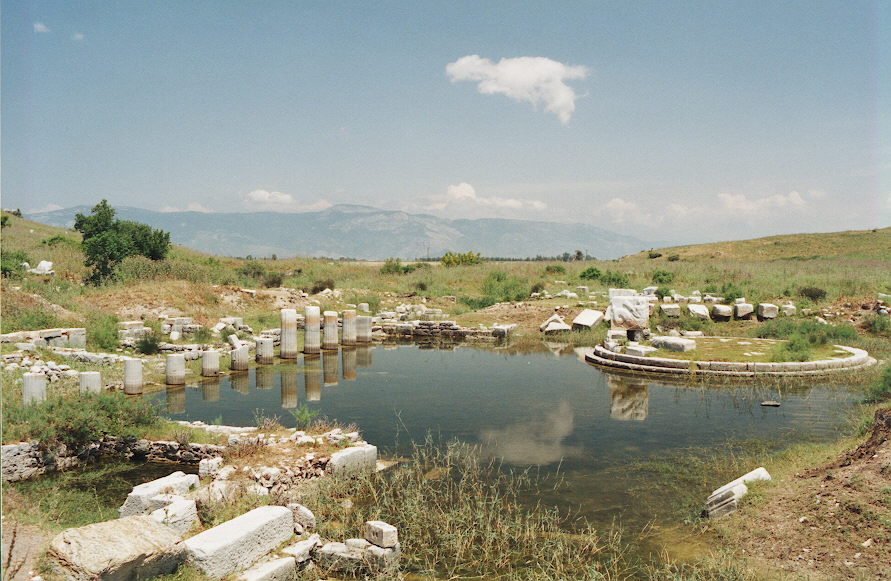
Thales held that the world originated from water (590 bc)

Ashurbanipal created "the first systematically collected library" at Nineveh (7th century bc)
where he attempted to gather all cuneiform literature available by that time
physis (8th century bc)

the Mul Apin Tablets (1000 bc)
Venus tablet of Ammisaduqa (1600s bc)
the Rhind papyrus (1800 bc)
25⁄8 (19th century bc)
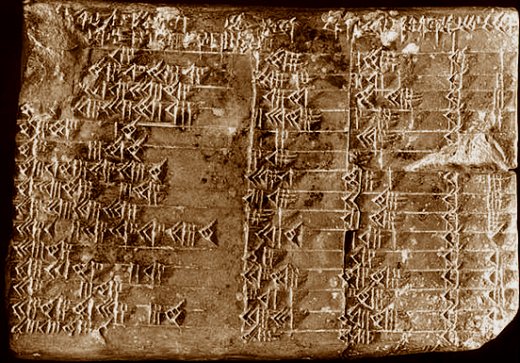
writing on tablets, Babylonian mathematicians (2000 bc) solve quadratic equations
and demonstrate their discovery of what is now called the Pythagorean theorem
the Moscow Mathematical Papyrus (2000 bc)
pyramids (2600 bc)
Egyptians started writing on Papyrus (2700 bc)
magic squares (2800 bc)
a sexagesimal (base-sixty) numeral system (3000 bc) was used by the ancient Sumerians

solar alignments of ritual sites (3200 bc)